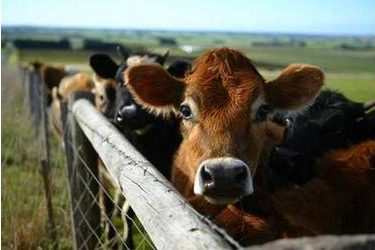Hay Shortage Could Make Beef Scarce in Oklahoma
KTUL-News 8 - August 7, 2022 2:23 pm

TULSA, Okla. (KTUL) — Oklahoma’s brutal droughts have brought havoc on crops. But when farms suffer, ranches suffer too.
One of the most important crops in America is not corn, wheat, or barley, but hay. When grass dies in the winter, farm animals have to eat something.
The Harding family ranch in Sallisaw ordered 70 bushels of hay last winter. They only have two left.
“Every day, I’m spending time on the computer trying to find us hay,” Tammy Harding said. “And hay is either too expensive, it’s too far away, they won’t ship it, or it costs just an enormous amount to ship it to us.”
Harding, who operates the ranch with her husband, said Oklahoma’s intense heat has reduced hay production by about one-third. Couple the scarcity with the price of gas to transport it, and the fierce demand is threatening to put some ranchers out of business.
Harding said she paid $3,000 for hay last year, but the same amount would cost her $9,000 today. She said she will most likely pay it, though, because hay is just the start of an unfolding butterfly effect. Without hay, ranchers will have to sell their cattle. Without cattle, there’s no meat to be processed. If there’s nothing to process, a meat shortage could hit grocery store shelves.
“Either they’re gonna be empty, or things are gonna be priced a lot higher,” Harding predicted. “Because if it costs everybody more to produce, the consumer’s gonna pay more in the end.”
Harding’s hope is that the government will help bring hay from northern states, which did not suffer droughts as severe, down to states like Oklahoma. She knows time is running out.
“We’re in August,” she said. “September, October, in two months, we’re gonna start feeding hay. And we don’t have any hay.”
“If we can’t feed them, then we can’t keep them,” she continued. “It’s either gonna go to the butcher or the livestock market. Y’know, we’d rather sell them to other ranchers or farmers, but if they can’t find hay either ‘cause the cost of hay is going up so high, they can’t afford to feed them either. So it is a real quandary.”



